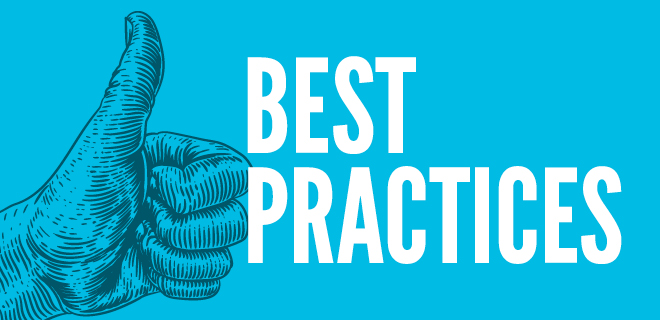
Content theft is rising, and publishers must proactively protect their intellectual property. This framework from Alice Ting, VP, Content Partnerships, at DMG Media, outlines four key strategies—legal, technical, revenue, and industry collaboration—to safeguard digital content in 2025 while maintaining accessibility and monetization.
In today’s digital landscape, protecting and growing publisher revenue demands a comprehensive strategy to protect intellectual property (IP) while maintaining content accessibility.
The recent rise in content theft and copyright infringement necessitates a proactive approach to content protection. While much has been focused recently on AI, these strategies can be applied generally to many use cases in which third parties are scrapping publisher websites.
This framework outlines four essential strategies–legal, technical, revenue, and industry collaboration–for safeguarding digital content in 2025.
Four Strategies for Safeguarding Digital Content in 2025
1. Legal Protection: Setting the Foundation
Content protection begins with robust legal measures establishing clear ownership and usage rights. Publishers should deploy a systematic approach and a readiness to act:
- Establish comprehensive Terms of Use that explicitly address the scraping challenges which may include AI. The New York Times’ approach to AI and scraping provides a very strong example. Publishers should regularly update terms as new technologies and use cases emerge.
- Implement a global rights management strategy. As more publishers establish operations outside of their home markets, it’s important to understand the variations in copyright law across markets. While copyright protection for original works is automatic upon creation in both the US and UK, a publisher can also register their articles with the US Copyright Office to show formal ownership.
- Develop a structured enforcement protocol to monitor, document, and escalate copyright issues. This protocol could include copyright notices, links to licensing terms, and sending cease and desist letters. A publisher’s active defense of its rights can strengthen its legal position.
2. Technical Safeguards: Creating Barriers
Safeguarding IP requires vigilance and foresight, anticipating and addressing potential threats before they materialize. The best approach is a multi-layered, carefully balanced technical approach.
Traditional methods, such as Robots.txt, while still useful as a first line of defense are more like “No Trespassing” signs. People, or in this case, crawlers or bots, can simply ignore them.
Publishers must enact additional technical measures such as bot detection, mitigation, or blocking systems to control access. Tech and business publisher, Fast Company, used DataDome to block unauthorized scraping and mitigate content theft. In addition to DataDome, major providers such as Cloudflare and Akamai also offer escalating levels of this type of service to publishers.
Other useful tools include watermarking, which embeds traceable identifiers in digital content to enable source tracing; IP-based rate limiting and/or request throttling; and using CAPTCHAs to separate humans from bot activities. Protection can be implemented at the server, client, or network levels.
However, balancing protections against user experience and other internal initiatives can be challenging. Using CAPTCHA frequently can frustrate user experience leading to lower engagement. An overly aggressive use of bot blocking may impact organic traffic if SEO crawlers are inadvertently blocked.
Additionally, tech solutions require significant resources to implement and maintain and could be a challenge for smaller publishers that do not have in-house tech staff or large budgets.
3. Revenue Generation through Controlled Access
Successful content monetization requires a strategic approach that balances protection with accessibility.
Content partnerships and licensing programs help publishers showcase the value of their content. In addition, content licensing and syndication arrangements expand a publisher’s reach, attract new audiences, enhance brand visibility, and generate direct and indirect revenue.
By creating a network of content partnerships with off-platform providers, publishers can establish a pattern of content permissioning and monetization for varied use cases. Publishers, such as The New York Times, Reuters and the Financial Times, already maintain dedicated, established content licensing and partnership teams focused on monetizing their IP.
Paywalls can deter automated bots and unauthorized access by requiring authentication and enabling publishers to monitor and control content access.
Start-ups, such as Tollbit, function as an AI bot paywall, offering a B2B solution that allows publishers to control access and pricing of their content for AI use cases, even if the publisher doesn’t have a consumer-facing paywall.
4. Industry Collaboration
Also, publishers should actively support regulations that give them control and fair compensation for how their content is used by others.
By banding together, publishers can supplement their efforts by joining strong industry alliances such as the News Media Alliance (US or UK), trade associations (WAN-IFRA), or collective management organizations such as the NLA (UK) or Copyright Clearance Center (U.S.).
Industry groups, while helpful to larger publishers, can be especially powerful for smaller publishers who don’t have the resources to do it alone. The News Media Alliance represents 2,000 publishers in the US and Canada and has been preparing for legal action against an AI organization for unauthorized use of content to train its LLM on behalf of some of its members.
The NLA supports many smaller publishers in revenue generation and support. A more collaborative approach amplifies individual efforts that ultimately benefit the entire industry, not just the largest publishers.
Future-Proofing Publisher IP
A comprehensive and proactive approach as outlined above can help publishers stay in control of their intellectual property, ensuring they can keep making money from their content, and hold onto its value tomorrow.
No single solution is foolproof–especially as technology continues to adapt with bots and web scrapers becoming more sophisticated. However, a layered approach by publishers creates effective barriers making it harder for third parties to take publisher content without permission.
Ultimately, safeguarding content is not just about protecting assets; it’s about securing the future of a publisher’s business and its industry.